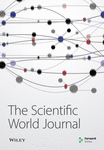Minimal Residual Disease Diagnostics and Chimerism in the Post-Transplant Period in Acute Myeloid Leukemia
Abstract
In acute myeloid leukemia (AML), the selection of poor-risk patients for allogeneic hematopoietic stem cell transplantation (HSCT) is associated with rather high post-transplant relapse rates. As immunotherapeutic intervention is considered to be more effective before the cytomorphologic manifestation of relapse, post-transplant monitoring gains increasing attention in stem cell recipients with a previous diagnosis of AML. Different methods for detection of chimerism (e.g., microsatellite analysis or quantitative real-time PCR) are available to quantify the ratio of donor and recipient cells in the post-transplant period. Various studies demonstrated the potential use of mixed chimerism kinetics to predict relapse of the AML. CD34+-specific chimerism is associated with a higher specificity of chimerism analysis. Nevertheless, a decrease of donor cells can have other causes as well. Therefore, efforts continue to introduce minimal residual disease (MRD) monitoring based on molecular mutations in the post-transplant period. The NPM1 (nucleophosmin) mutations can be monitored by sensitive quantitative real-time PCR in subsets of stem cell recipients with AML, but for approximately 20% of patients, suitable molecular mutations for post-transplant MRD monitoring are not available so far. This emphasizes the need for an expansion of the panel of MRD markers in the transplant setting.




